Trekking in the mountains of Kyrgyzstan is an under-the-radar delight. The mountains are dramatic and vast, and while out there you’re spending some days without another soul in sight and others with just a few around. It’s unbelievable how unspoilt it still is, given the incredible scenery.
It’s hard to find places like this left in the world. Given that, it’s also quite wild and trekking in Kyrgyzstan comes with its own considerations. The following is what I learned during my 8-day trek out of Karakol:
1) Bring waterproof hiking boots (seriously)
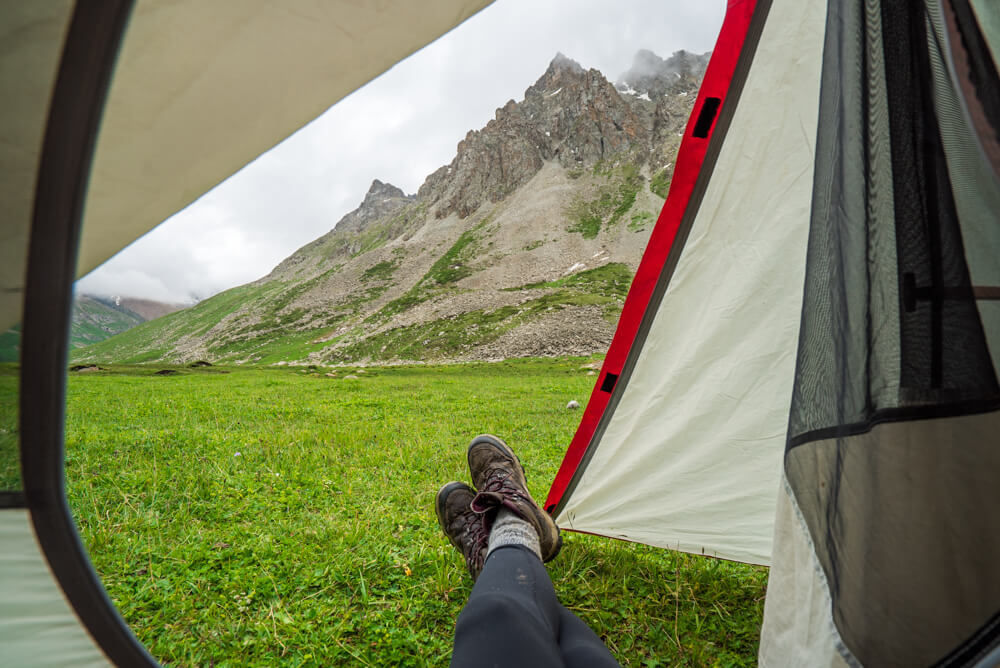
I had soaking wet feet for the first three days of my trek. ‘Wear waterproof boots,’ they said. ‘Oh I will!’ I replied.
My fatal error is my boots, after much love in Patagonia and the American Southwest, had two gaping holes on them. I didn’t realize until it was too late and Oh, I suffered for it.
Most boots don’t stay water tight for more than a year or two of heavy use and mine were no exception. Check yours first or buy new! These are the ones I use (and will be buying again).
2) Bring sandals with tread
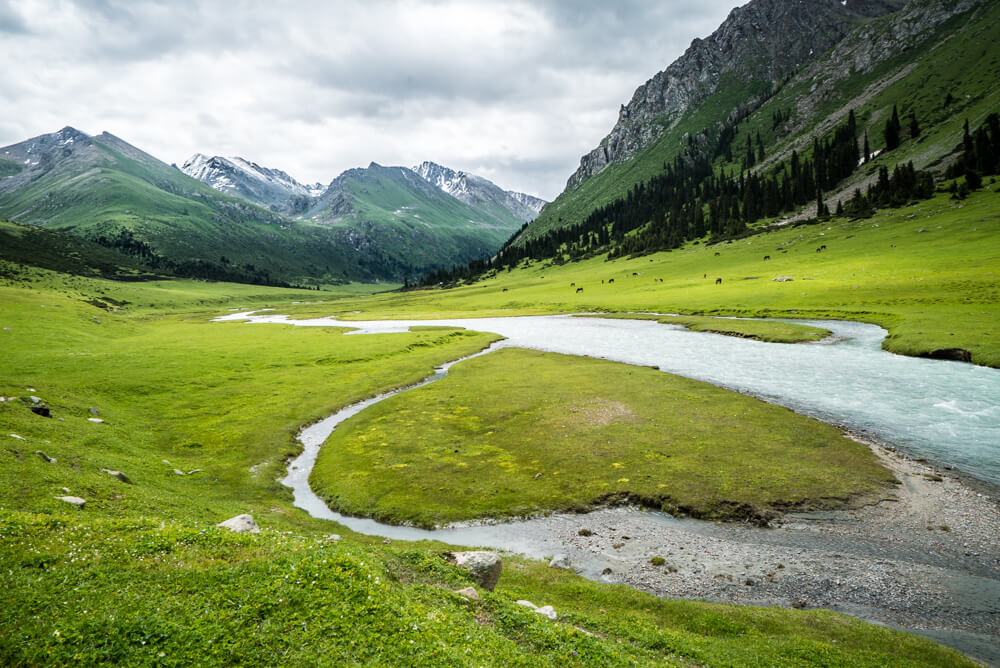
You’ll almost certainly be crossing frigid rivers without bridges, and when the water is higher than your boots can go, it doesn’t matter how waterproof they are, you’ll get them wet. It’s better to remove them to cross, and either do so barefoot or even better, with sandals that have tread.
Tevas or something similar are great for crossing rivers and for getting out of your boots at night. Double whammy value.
3. Prepare for all kinds of weather
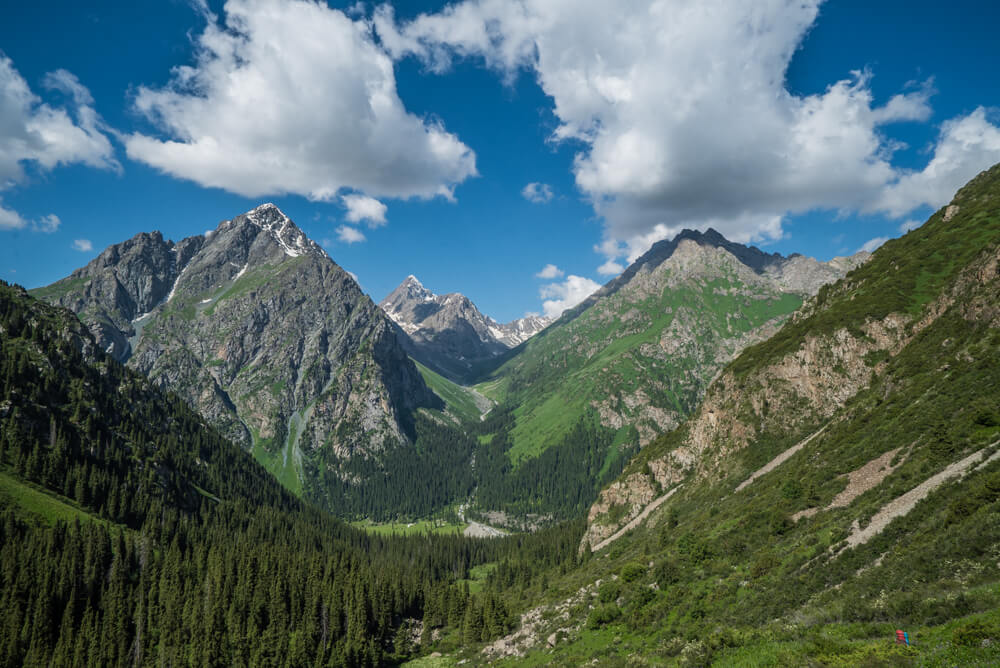
My trek that spanned 8 days from the end of June into July required a tank top, sunscreen, a ski jacket, and gloves. Sometimes it’s boiling hot and sometimes it’s freezing cold. One night we even got snow!
Even if it feels hot in Karakol, Jyargalan, or wherever you start, plan on cold weather at altitude.
4) Know that there may be no trail
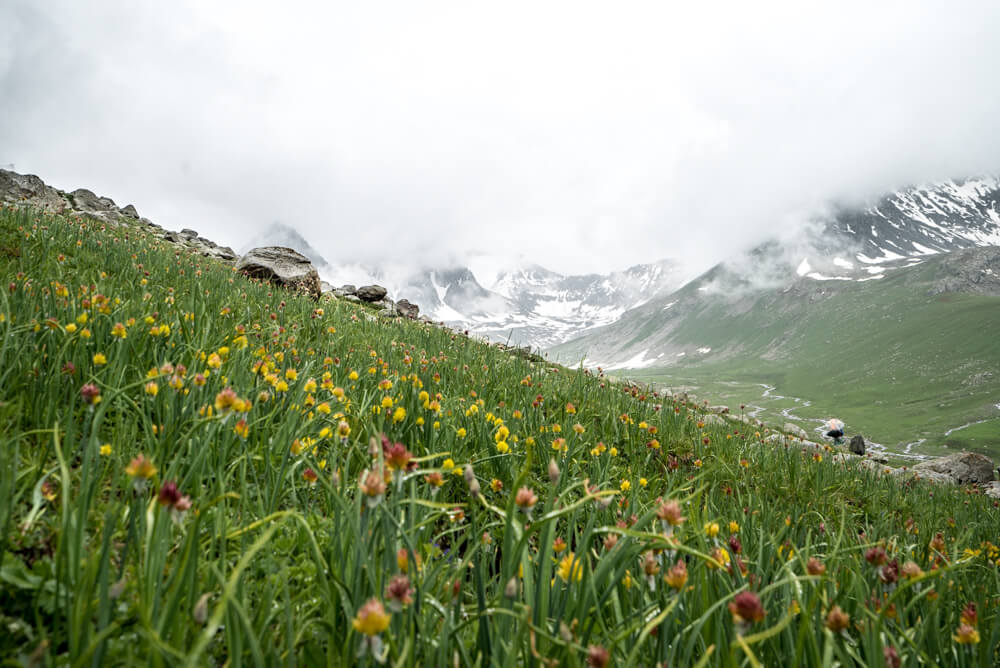
For the more popular routes you’ll find a trodden trail, but most of the treks don’t have a trail, markers or even rock cairns.
You’ll be doing a lot of GPS plotting and map checking if you don’t have a guide, which brings me to;
5) Consider hiring a guide
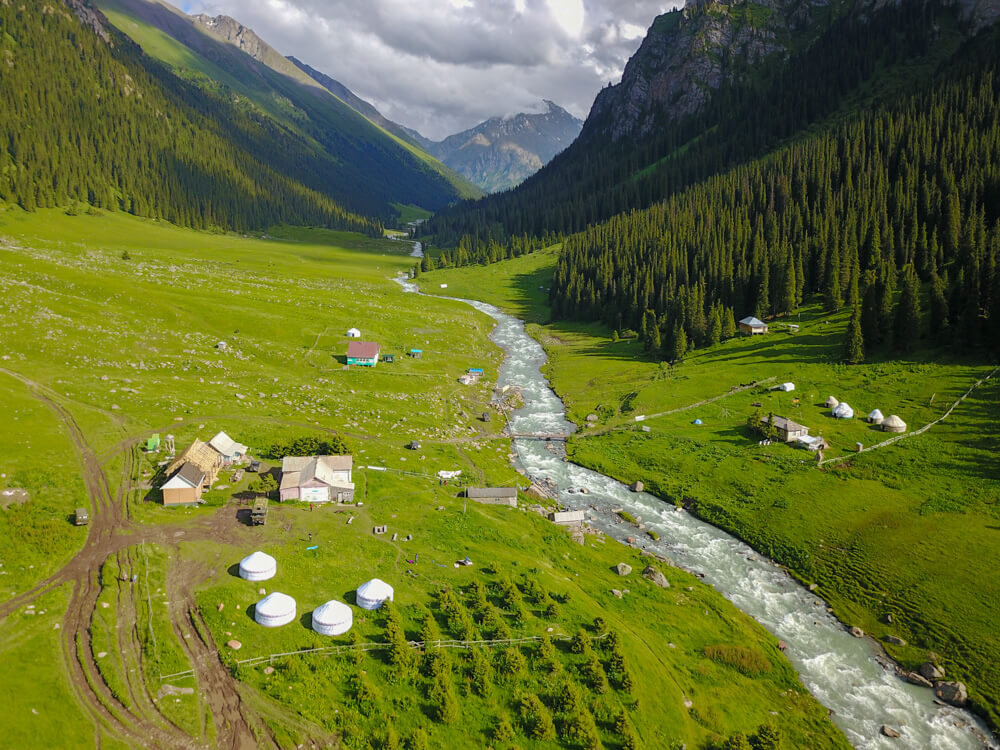
I almost never take a guide when I trek. I didn’t in Patagonia or Nepal, but in Kyrgyzstan, at least for the more remote trails (and honestly they are the best ones) please don’t go it alone. On day two of my trek to the Almalu valley, we didn’t see anyone else. Seriously not a soul.
6) You will probably hike through snow at some point
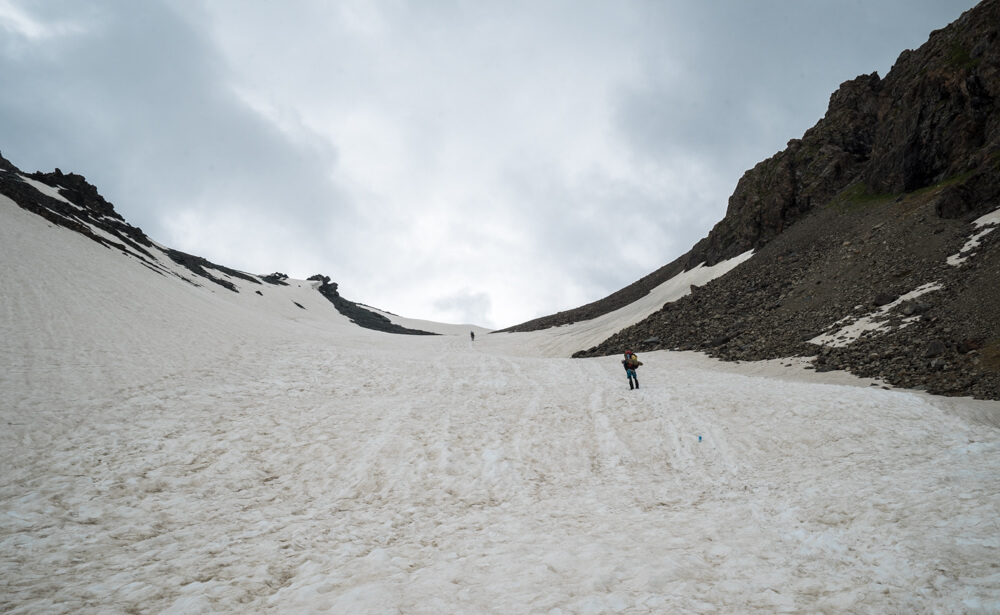
Even in the middle of summer, the passes can have snow on them. We crossed six passes on my trek, and half of them had snow, which could make for really cold feet. Make sure your shoes can handle it.
7) Here’s a packing list
Clothing-wise. Bring two changes of clothes, 8 pairs of undies, a waterproof jacket, and four pairs of socks. That’s it.
I know that it sounds pretty gross if you’re a first-time trekker that you’d only bring two sets of clothing – one for sleeping in and one for trekking in – but trust me, more clothes would just equal a pointless amount of extra weight. Within 5 minutes of trekking in your new, clean clothes, they will be sweaty too, so what’s the point?
Trust me on this one:
- Waterproof, warm jacket. I almost always trek in my ski jacket.
- Two tank tops
- Two long sleeved ski underwear tops (I love this one because it’s so light and warm, and even though it’s wool it doesn’t make me itchy)
- Two pairs of thick quick-dry leggings
- Enough tissues for the entire trip (bathroom needs and runny nose needs)
- Hat, and something to keep it on
- Beanie
- Backpack with rain cover
- Sandals (as mentioned above)
- Headlamp
- Gloves
- At least four pairs of socks
- Water container of some sort. I prefer camelbacks
- Sunglasses
The following will most likely be provided by your guide if you hire one:
- Sleeping bag suited to at least comfort level 0 degrees
- Lightweight tent
- Sleeping mat
- Lightweight cooking equipment, a stove, a knife, and fuel
- Enough food for each day plus an emergency stash
- Trekking poles
Optional but helpful: 14, 16, 5, 6.2, plus a little flask of local vodka or cognac because sometimes a little swig to warm you up is kind of nice.
- Solar charger
- A way to clean the water if you’re worried (though I didn’t have anything with me)
- Tunes to listen to in case you need some motivation (this is my playlist)
8) Embrace the chance to return to your natural state
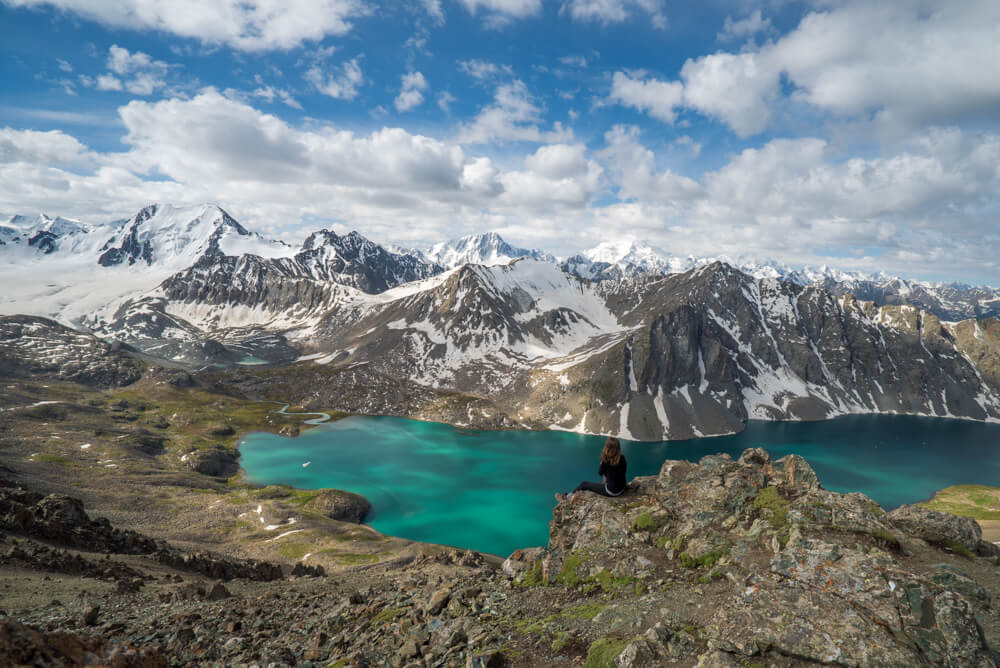
If you were bothered by point #7 you’ll probably also be bothered to know that you most likely won’t be showering during your trek. NBD, honestly, because everyone is in the same boat.
By day 2 I tend to feel kind of gross, by day 3 I care a bit less, and by day 4 I’m ready to renounce showering forever. I stop caring if I have dirt on me. I start laying right in the grass and just enjoying my chance to be off the grid, surrounded by nature, and back to the caveman state we came from (okay with a ski jacket and tent so I guess I can’t claim full authenticity).
Give it a try, you’re more adaptable than you think.
trekking in Kyrgyzstan delivered so much more than I thought – more challenges, more glaciers and peaks than I’d seen in one place, more fun local interactions, and more laughter. It’s one of those quiet that probably won’t remain that way for long.
So go and explore these mountains. In many cases, you’ll be the only one there, like a modern-day cartographer.
Click here to read about my trekking route
*This trip was made possible by Visit Kyrgyzstan and the support of the American people through the United States Agency for International Development (USAID). The contents are the sole responsibility of the author and do not necessarily reflect the views of USAID or the United States Government.
GG says
This is great advice and the change of climes from warm to snow is really neat. Hygiene in these cases has to be restricting to making sure you don’t get infected or sick, beyond that it is a luxury. Great advice about isolated exploration. You are great about preparing everyone for the challenges (and joy!) of traveling in isolation and how to stay safe and using common sense (I know that some of this is from learning from you own mistakes, but..). This is true about you especially about the choice of countries where you get to go to exotic places, meet people from many cultures and walks of life, while still picking places that are relatively stable and safe (e.g, Rwanda vs. Burundi). Are you planning to give India a try in the near future (the guest blog about India was very interesting).
Is there additional advice you might have about the altitude? You are very healthy, would there be issues for others you might want to give whether this is for them or not or the pacing? I am an avid runner and full of hot air and have been to 15,000 ft (4572 meters) but not even sure to properly prepare. Know there are sites to look at but your personal experience might be useful. Also, a sillier question, can you get by as a vegetarian by going to the outdoor vendors or through the guide? I understand some areas of the word wouldn’t work with this too well and for treks like this you need to be properly fed. Thanks for your thoughts. The advice here works for any trek covering varying altitude and I will keep it handy if I get to hike out West!
Kristin says
I think the best thing you can do to be prepped for altitude is hike in altitude. However any endurance training you can do will help! Stair climber, running certainly, stationary bike, swimming. They asked me if I had any dietary restrictions so I’m sure they can accommodate vegetarians 🙂
Joan Torres says
Good list! So true what you say about the river… I had to cross over 15 rivers, no kidding, and had the remove my shoes in at least 3 of them. I was thinking what did you miss but the only thing I could think of is that the trek is shown on Maps.me, so if you can’t afford a guide, it makes things much easier. And very important, never drink from the main river, as animals hang out on it and it’s not very healthy! I filled the bottle myself and it was full of sediments!
Kristin says
Hmm, I did drink from the main river. The small runoffs can actually be worse.
Nadia says
Hi Kristin,
Your posts inspire me to go soon! Can you suggest a budget and how to save doing the trek? Also about the best time to go there? I check the Ecotrek and it sounds like there will be more expensive for a solo traveler. Thanks!
Nadia
Kristin says
Hi Nadia, maybe you can ask to join a group that has already booked because yes, it’s more for a solo traveler. You could do it independently as well but I’d stay on the more well marked trails and plan on carrying your own stuff in that case.
Amine says
Hi Kristin,
I’ll be traveling to Kyrgyzstan in a week with a couple of friends. Similar to you, we’ll be traveling with a DJI Mavic drone. I was wondering how you managed to keep the drone charged on your multi-day hike. Did you use a solar panel? If so, could you please send me the details of which product you used?
Thanks and best,
Amine
Kristin says
I had three batteries. Unfortunately my solar charger wouldn’t be enough to charge it up, although you could try via USB. I used this solar charger for my camera: https://amzn.to/2lEe7ME
Lena says
Dear Kirsten,
thank you so much for inspiration!! 🙂
We have just a short question: Do you think it is necessary to book a hiking trip for hiking about 2-6 days in advance or do you think, that there are possibilities to book in Kyrgysztan? (we also decided to take a gudie…)
Kristin says
I think you can probably book in person, and it would probably be less expensive. There are some areas you need a permit for, but if you’re doing the hike I did, that’s not the case. Have fun!
Jeffrey says
6 of us from Singapore would like to trek Tienshan in July 2019. Do you have a good guide to recommend?
Thanks
Kristin says
Ecotrek is good!
Dec says
Hi Kristin
This article is extremely helpful.
My partner and I are planning to go end of May/Early June for two weeks and find a guide while we’re there rather than booking one in advance as we’d like to meet them in person first. What’s the best way to find a good guide? Do you think it would be ok for intermediate travellers to just have a guide for difficult treks and then explore by themselves and travel in a car the rest of the time?
Thanks
Kristin says
Yes I think you could travel mostly on your own but get a guide for the off trail hikes and finding one in person should work. My only concern is there will still be snow at the end of May.
italodisco80s says
Dear Christina, I live in this beautiful country, as an artist I wanted to add to your collection the best landscapes of our natural places, since many tourists with expensive cameras cannot capture the most beautiful places that tourists do not yet know about. But thank you very much for your articles beautiful